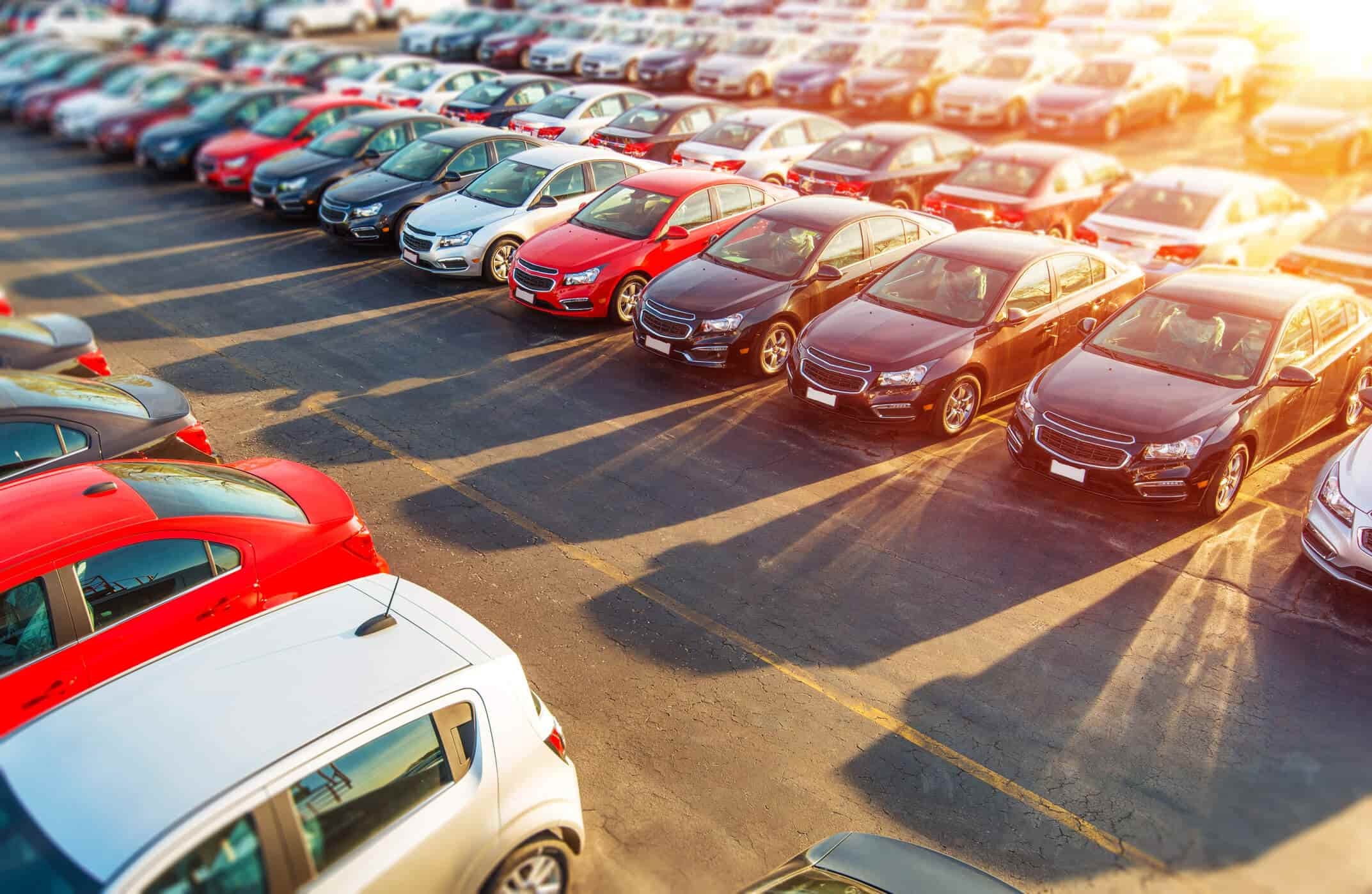The following article is a collaboration between AutoVision News and The Zebra’s internal content team. A partnership made with auto enthusiasts in mind, together we hope to simplify insurance education for every kind of driver on the road. This is auto insurance in black and white.
Autonomous vehicles: not as close in the rearview mirror as you might think

Table of contents:
By Carl Anthony
About five years ago, rumblings in the automotive industry suggested that, in 2020, we would have self-driving cars in mass production. Autonomous vehicles (sometimes written as “AVs” for short) have ridden quite the roller coaster since 2015. Initially, there was a great deal of excitement and the promise of new technology. As an industry, we rode this “innovation curve” upward for a time, but as the challenges of developing self-driving cars started to become apparent, 2020 suddenly wasn’t a reasonable timeframe.
There are engineering and technical considerations, legal and ethical implications, and a massive supply chain to organize. And five years ago, never could we have foreseen our nation’s auto manufacturing sector would be idle for so long.
Consumers have voiced their concerns about self-driving cars in recent years, too. According to surveys that gauge consumer interest in autonomous vehicles, unknown variables worried respondents most. Safety and trust are among the biggest, with consumers hesitant to embrace what they see as mainly a robot on wheels.
“A good portion of the population still doesn’t fully trust autonomous vehicles,” said Kristine Lee, licensed insurance agent and SEO content strategist for The Zebra. “Consumers don’t seem to be in a rush to want to own one.”

In a recent survey conducted by the Partners for Automated Vehicle Education (PAVE), just 18 percent of respondents said they would put their name down on a waiting list for an autonomous vehicle. “There are too many unknowns,” Lee continued. “Unless something drastic happens in the future, it’s hard to imagine that we entirely shift, as a society, to all autonomous vehicles.”
“I don’t think the autonomous era will be here as quickly as some are saying,” added Cliff Banks, Founder and President of The Banks Report, an automotive retail publication. “Certainly, there will be niche applications in tightly controlled environments, but mass adoption of driverless vehicles? Probably not for at least a decade.”
The cost of ownership worries nearly every consumer, and rightfully so. Set self-driving cars aside for a moment and consider only traditional automobiles. According to Cox Automotive, the average payment on a new vehicle exceeded $530 in 2018, or about 10 percent of the median household income. In May of last year, Kelley Blue Book noted the average transaction price for a new vehicle was $37,185, up four percent from May 2018.
While manufacturers have increased incentives during COVID-19, these substantial discounts are the exception, not the rule. The data repeatedly shows new vehicles go up in price, which leads to the inevitable “sticker shock” for many buyers. And this is just with regular cars, not self-driving ones, which will have a considerable amount of advanced technology.
“Unless something drastic happens in the future, it’s hard to imagine that we entirely shift, as a society, to all autonomous vehicles.”
“Younger people are concerned more than anyone about money and debt,” said Phoebe Wall Howard, Business Writer, Autos Team, Detroit Free Press. “They feel like things cost more than in times past, and their money isn’t going as far. It’s an issue that is too often dismissed by the media and business strategists as not significant, but this is top of mind for consumers I interview.”
Beyond the MSRP, there are maintenance and insurance costs to consider. Neither picture is clear right now with autonomous cars as to what those costs will be. However, a natural train of thought is that if self-driving cars do reduce accidents, insurance rates will go down. This may provide some relief from the higher MSRPs likely to accompany autonomous cars.
“If people are not filing claims, and if insurance companies are not making payouts in the volume they are used to, they will typically lower rates because there’s not as much risk on the road,” Lee said. “However, with autonomous cars, this is all purely speculation.”
In the PAVE survey mentioned above, respondents could not reach a unanimous conclusion on insurance. When asked, 29 percent said insurance rates would go down, 30 percent said it wouldn’t, and 41 percent were not sure. While it might be easy to assume self-driving cars would reduce insurance premiums, it’s not entirely a foregone conclusion. According to Lee, the data would need to show that autonomous cars do decrease accidents and claims unequivocally.
“As far as insurance rates go, my main prediction is that we will see a spike as insurance companies measure what they’re dealing with in terms of risk,” she said. “And then maybe, in time, once they collect all the statistics, they’ll drop rates if there is a drastic decrease in accidents and claims.”

One of the central challenges with autonomous cars is in the realm of cybersecurity protection. Engineers are working to determine the best ways to prevent hackers and viruses from attacking autonomous vehicles, both of which put occupant safety in jeopardy. There are legal and moral questions on how to manage and protect a driver’s personal data within the car as well.
“We want to keep a potential bad actor from taking control of your vehicle and causing a chain reaction,” said Vicki Kamenova, Partner & Cybersecurity Leader, EY Americas. “This is one of the unintended consequences of self-driving technology, which is supposed to be used for the greater good or transportation.”
In this regard, the insurance companies may provide peace of mind for consumers via new coverage options. “The insurance industry is going to adapt to these changes, and I can see both product liability coverage and cybersecurity coverage coming in the future,” Lee explained. “If more self-driving cars are on the road, they will be vulnerable to cyber-attacks, and consumers will want coverage for situations like that.”
The jury is still deliberating on when autonomous vehicles will arrive en masse. In the meantime, there are some best practices we can follow when it comes to our current cars and insurance. The first is being mindful behind the wheel. Driving history has an impact on how much we pay for auto insurance.
Next, we should always shop around. The Zebra lets visitors compare rates from top insurers, which is essential when getting the best coverage for the dollar. The vehicles we seek out also play a role. There are makes and models we can consider to keep our insurance rates more affordable.
And lastly, we should never risk driving without coverage.
“If you’re lucky enough not to get an accident while you’re uninsured, you’ll be paying higher rates when you need insurance again,” Lee said. “Your insurance history is definitely a rating factor that insurers use to price you.”
Carl Anthony is Co-Founder & Managing Editor of AutoVision News and a member of the Midwest Automotive Media Association and the Society of Automotive Historians. He serves on the board of directors for the Ally Jolie Baldwin Foundation, is a past president of Detroit Working Writers, and a loyal Detroit Lions fan.
Stay in touch and subscribe!
Get advice, insights and tips from our newsletter.
Related Content
- From boats to blockchain: The history of insurance in the United States
- Navigating claim denials: What to do if your claim is rejected
- Ask an agent: Teen troubles
- Is my car totaled? (Calculator)
- [UPDATE] Insurance companies weigh Delta variant risks
- What's your car insurance IQ?
- 45891: The ZIP code with the lowest insurance premiums in the country
- Insurance outlook for 2024
- Insuring the rapidly growing gig economy amid a global pandemic
- How to switch car insurance companies
